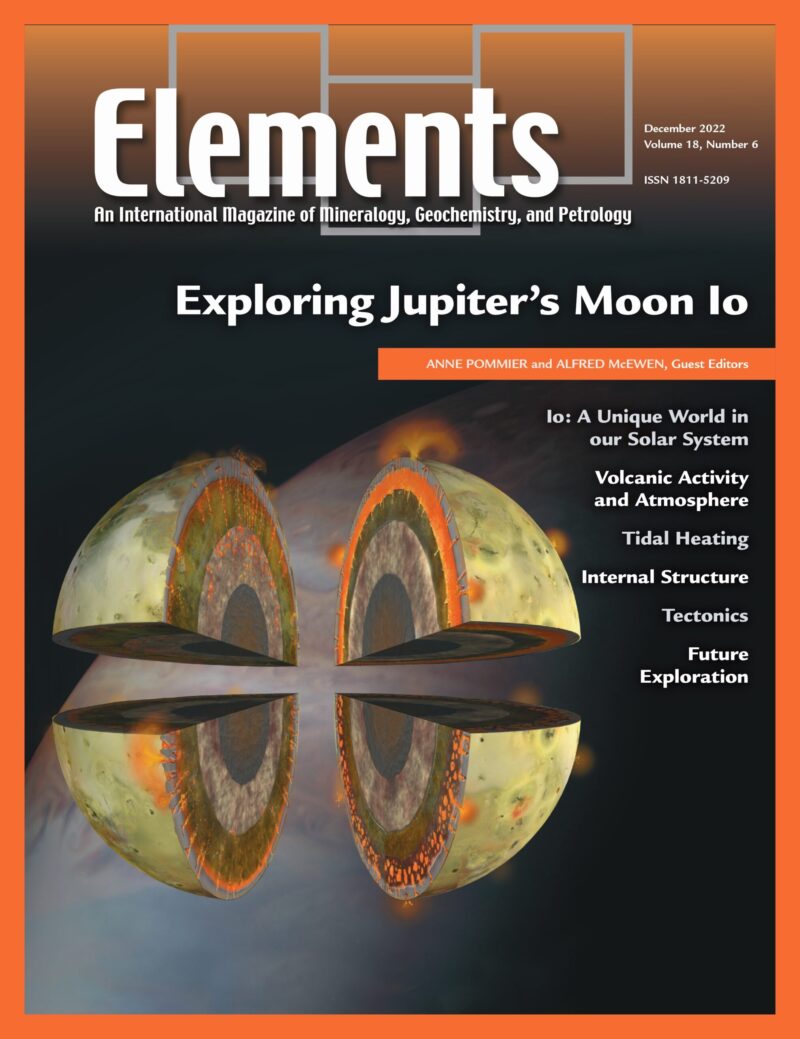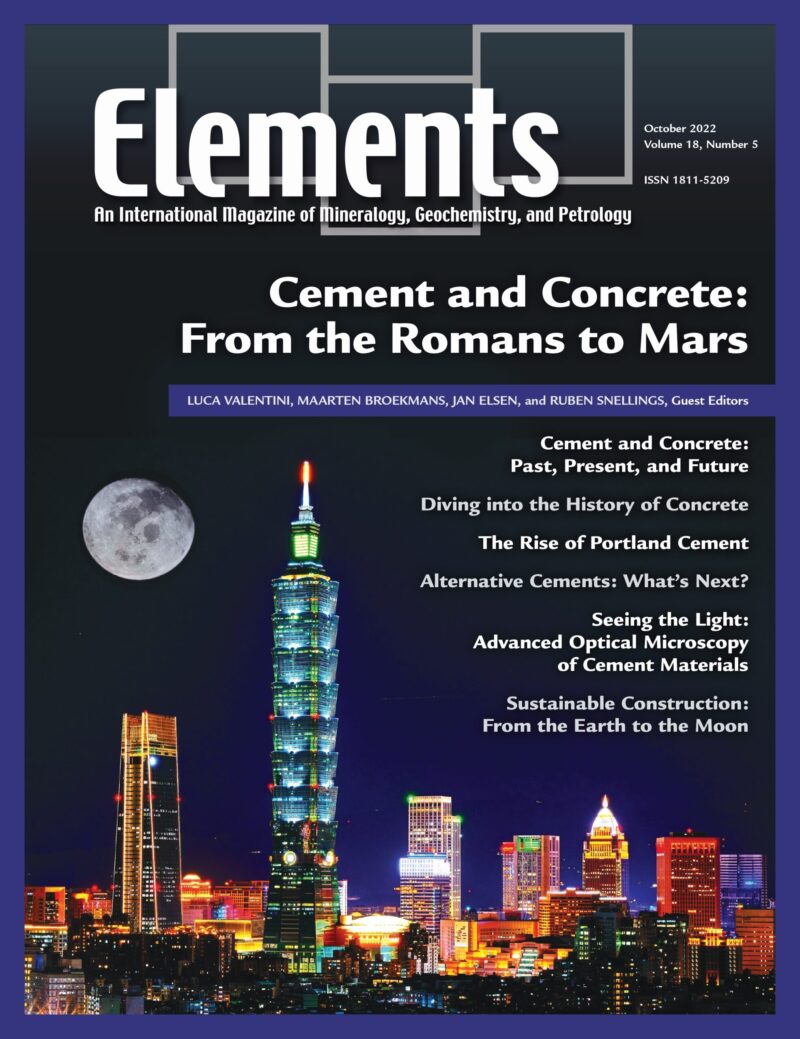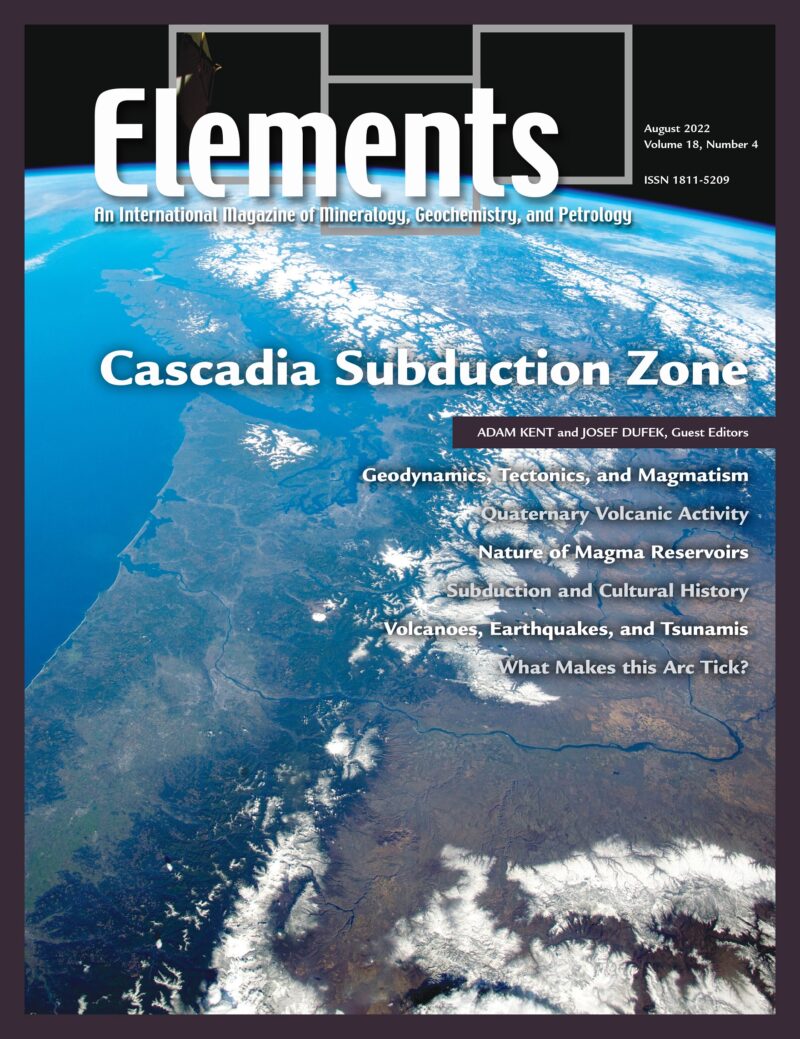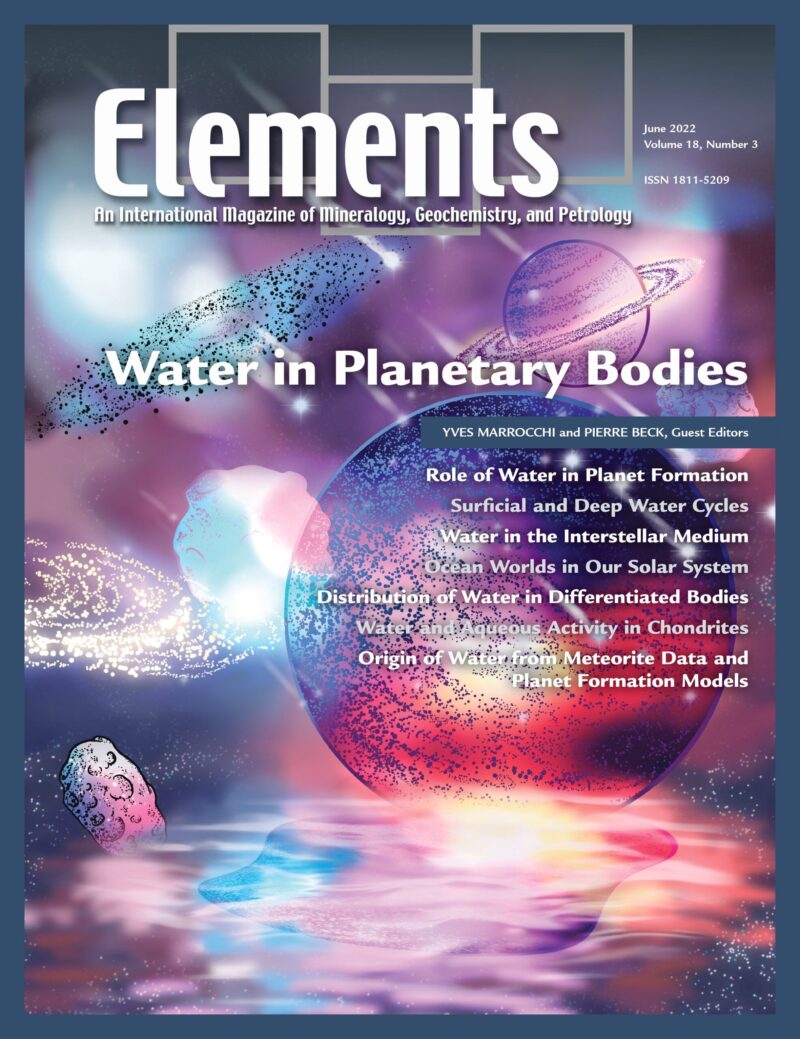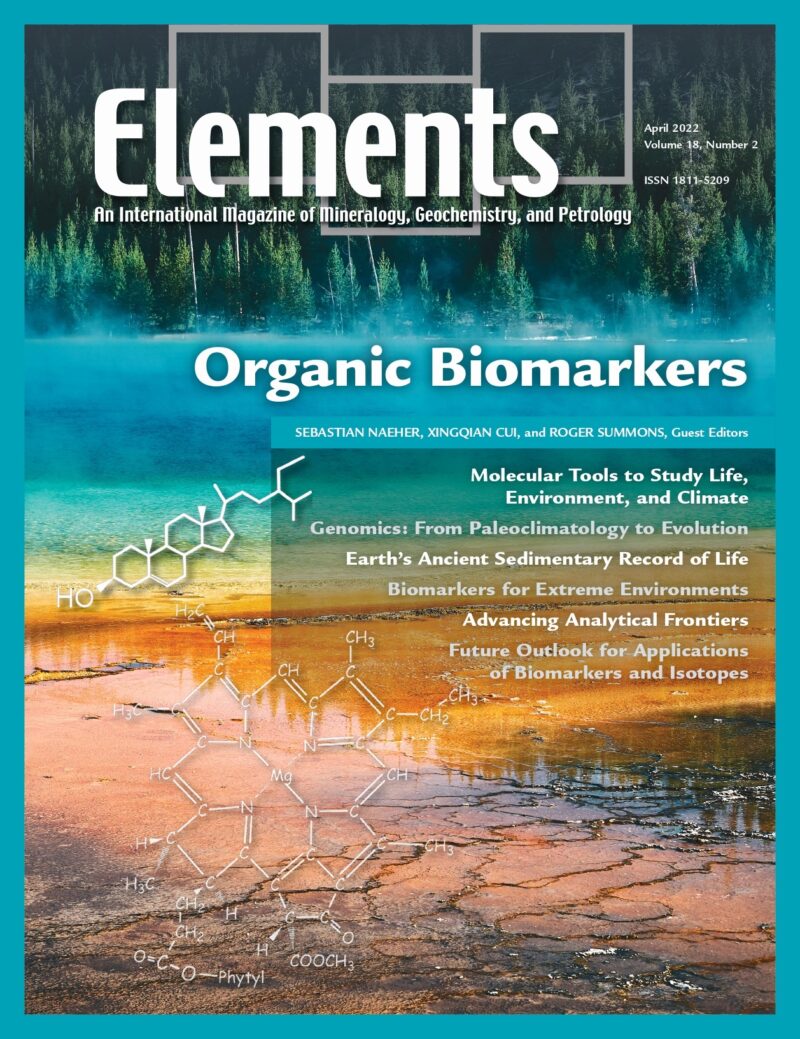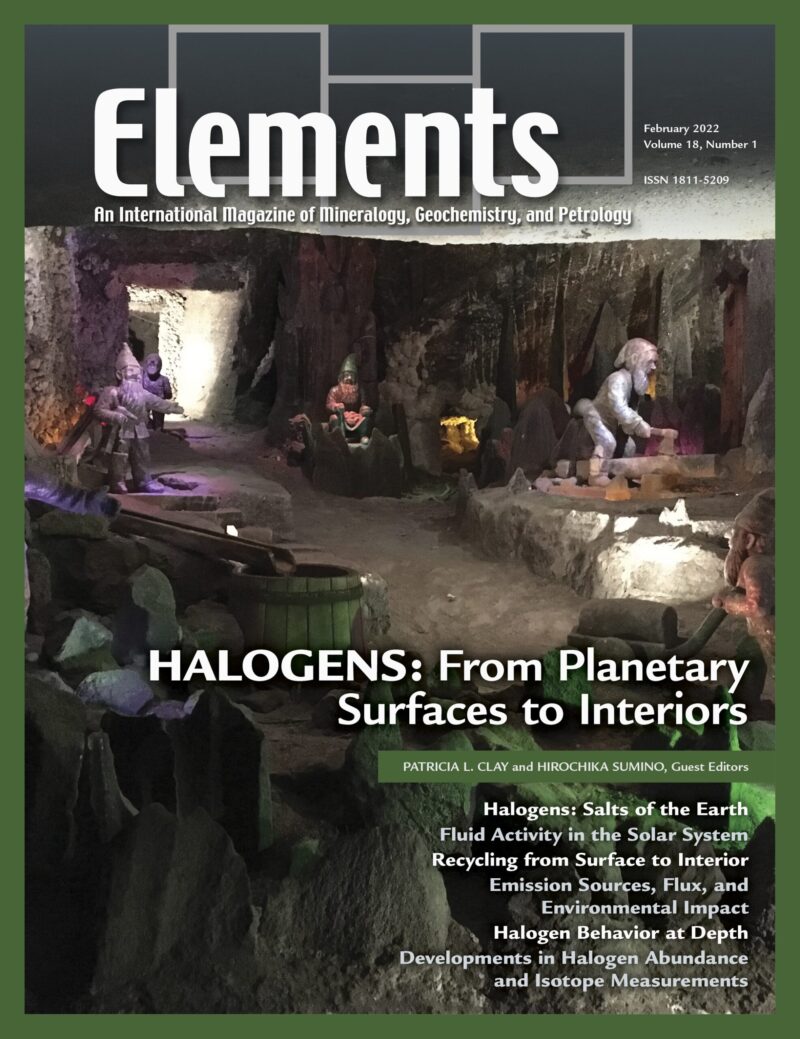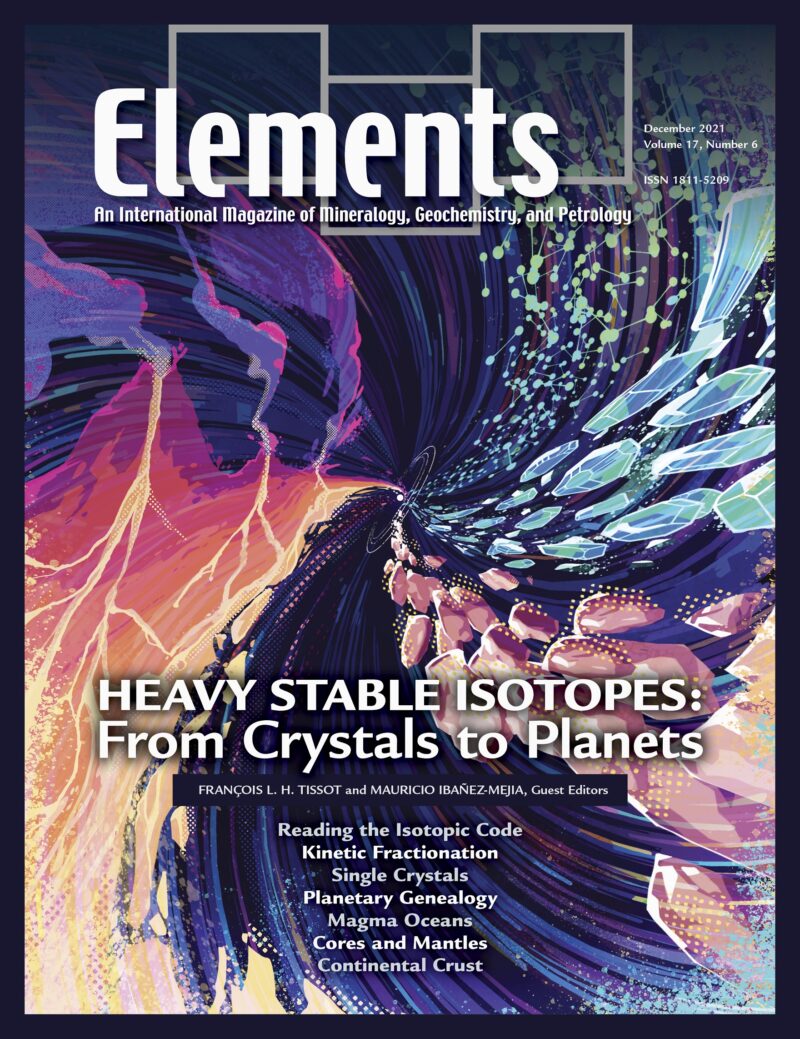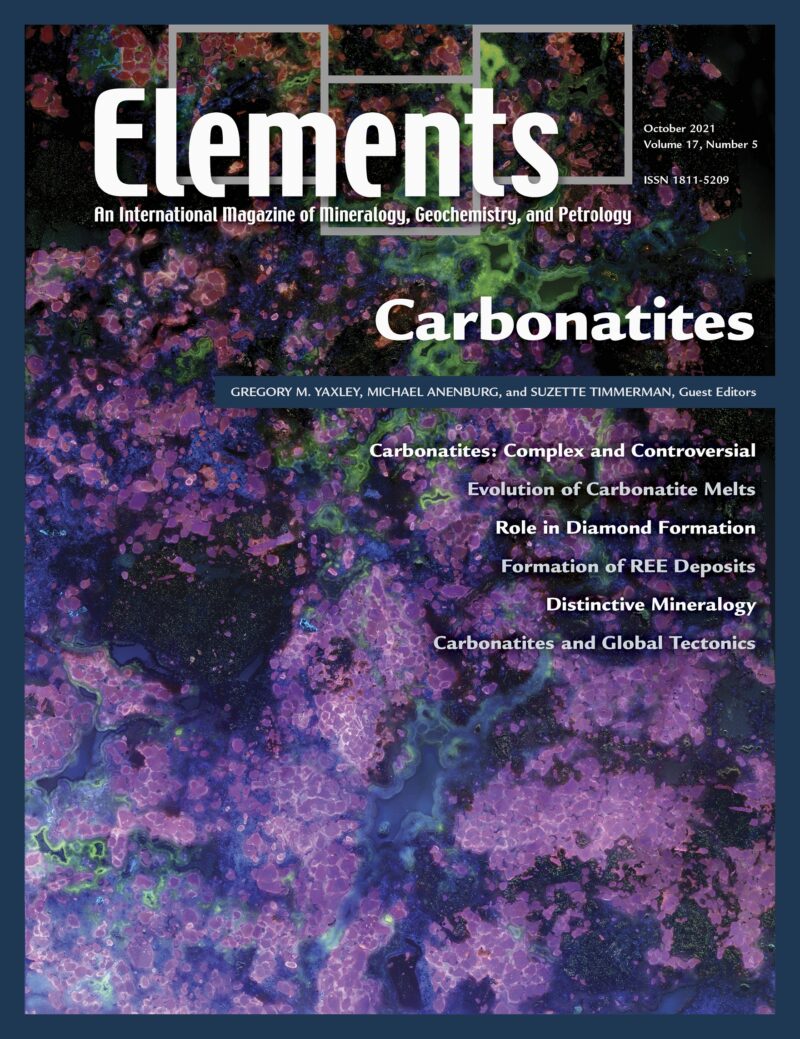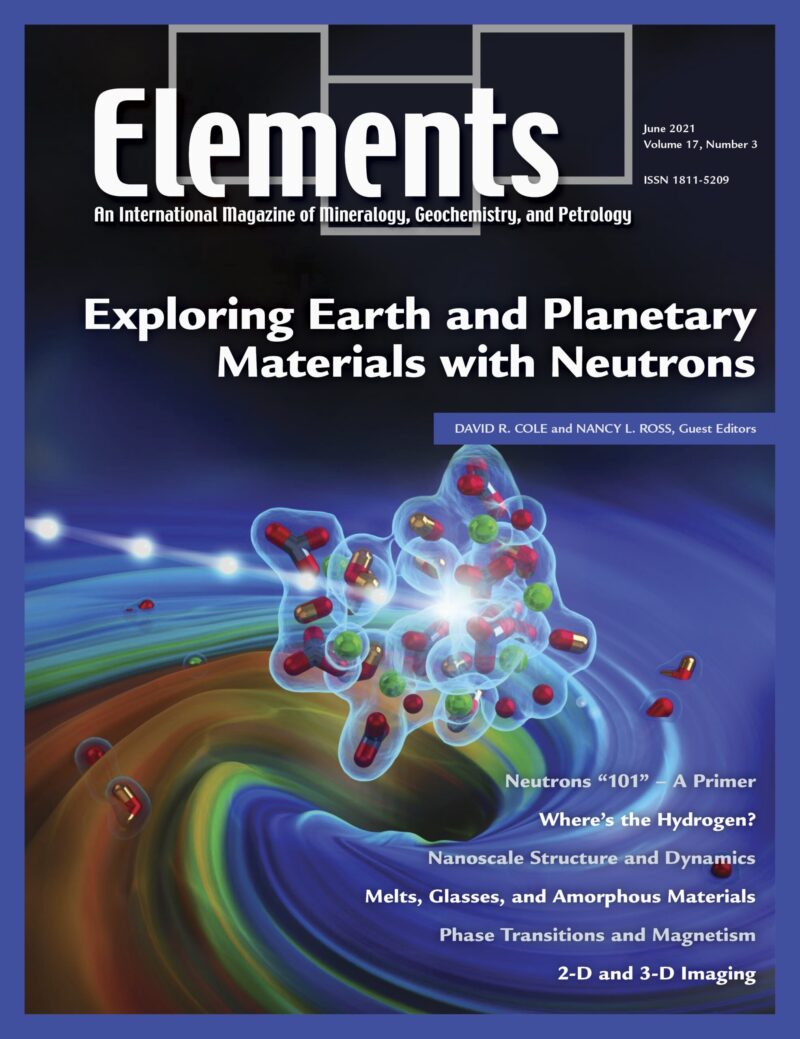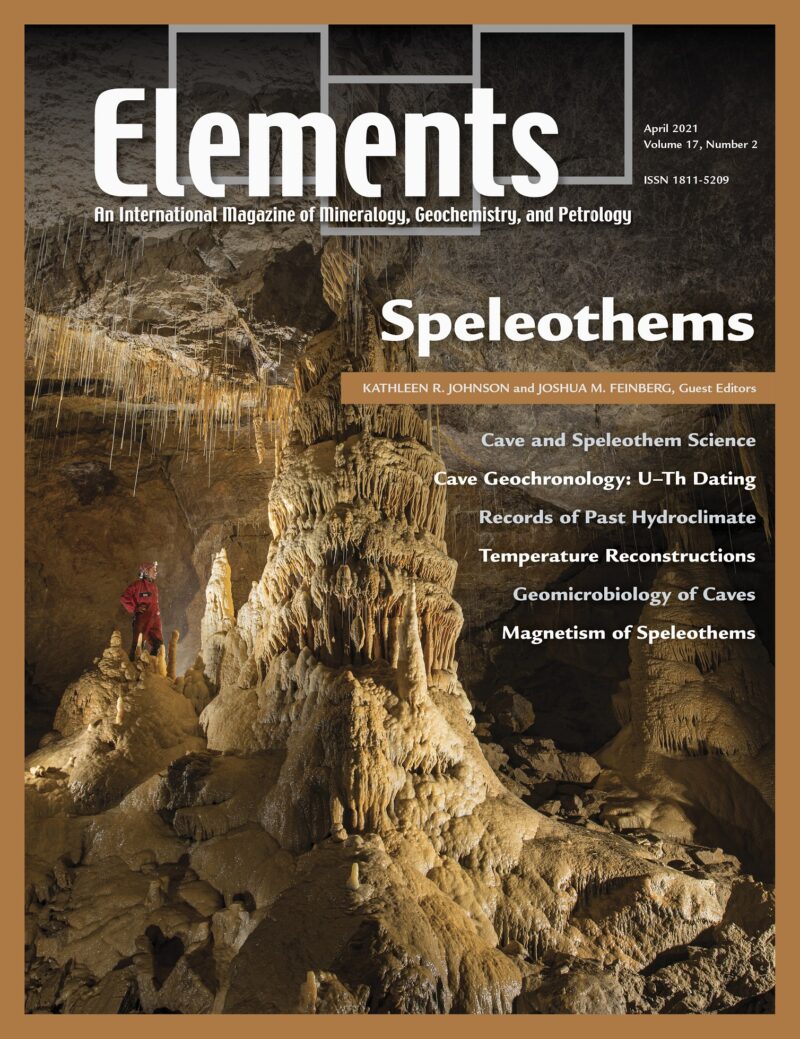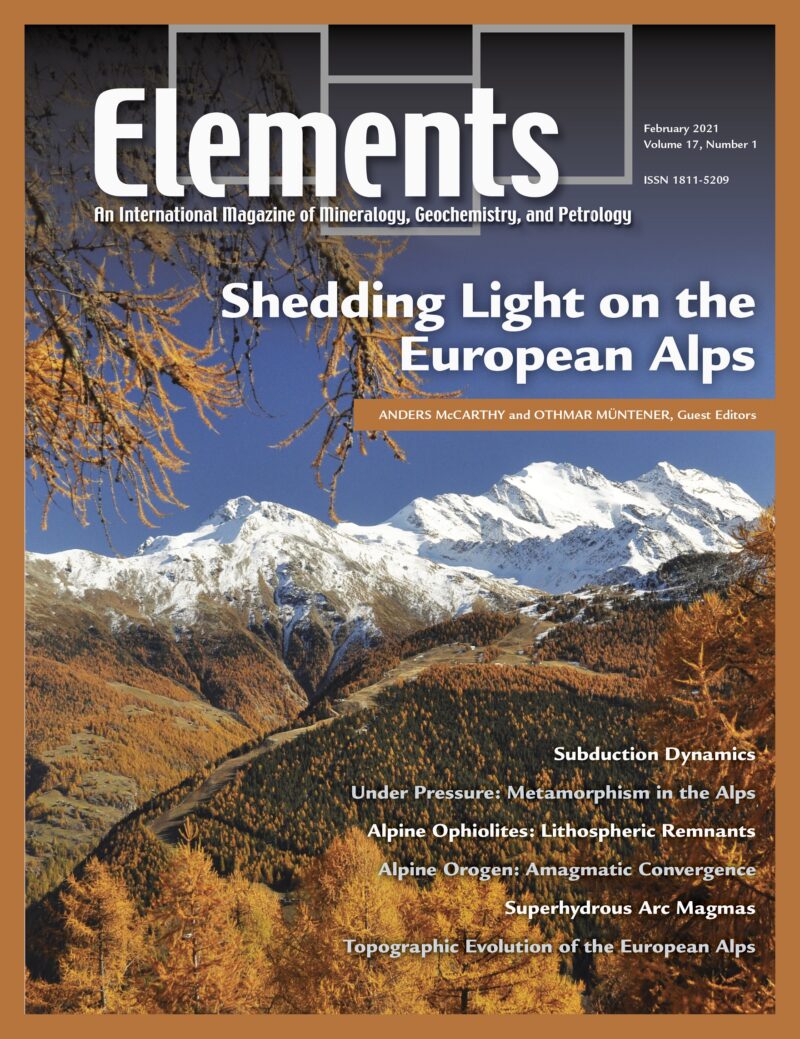-
Exploring Jupiter’s Moon Io, December 2022, Vol. 18, No. 6
$20.00Jupiter’s moon Io is the best place to understand a fundamental planetary process that shaped terrestrial planets, icy ocean worlds, and extrasolar planets: tidal heating. Io is the most tidally heated world in our Solar System and may contain a magma ocean.
-
Cement And Concrete: From The Romans To Mars, October 2022, Vol. 18, No. 5
$20.00Portland cement represents an essential commodity in a developing and quickly urbanizing world. However, the downside of its popularity is a massive ecological footprint, in terms of global warming potential and consumption of mineral and water resources.
-
Cascadia Subduction Zone, August 2022, Vol. 18, No. 4
$20.00Subduction zones—some of the most active geological regions on Earth—are also home to dynamic landscapes and destructive geological events. The Cascadia subduction zone (also known as Cascadia) runs along much of the western margin of North America and occupies an influential place in the global pantheon of subduction zones.
-
Water In Planetary Bodies, June 2022, Vol. 18, No. 3
$20.00Despite being a simple molecule, water has played a key role in shaping the Solar System from the formation of early solids to the processes of planetary and moon formation. Through its astrophysical cycle, water has driven the evolution of protoplanetary disks, which, in turn, has affected the water budget of terrestrial planets and, therefore, their geological activities and habitability.
-
Organic Biomarkers, April 2022, Vol. 18, No. 2
$20.00Biomarkers are molecular fossils that are preserved in a wide range of environmental archives (e.g.
-
Halogens: From Planetary Surfaces To Interiors, February 2022, Vol. 18, No. 1
$20.00The halogen-group elements (F, Cl, Br, and I) are common in the terrestrial inventory, though often present in trace amounts in many Earth and planetary materials. The halogens play a key role in a variety of geologic environments and processes, from mineralization to their influence on the composition of Earth’s atmosphere when released as oceanic, volcanogenic, and anthropogenic emissions.
-
Heavy Stable Isotopes: From Crystals To Planets, December 2021, Vol. 17, No. 6
$20.00Since their discovery in 1913, stable isotopes have become formidable tracers of physicochemical processes at all scales. Steady advances in mass spectrometry have allowed isotopic inquiries to move from the so-called “traditional” systems (i.
-
Carbonatites, October 2021, Vol. 17, No. 5
$20.00Carbonatites are rare, but important, igneous rocks in the Earth’s crust. They are composed dominantly of the Ca, Mg and Fe carbonates, along with many other minor and trace components.
-
Geoscience Beyond The Solar System, August 2021, Vol. 17, No. 4
$20.00A revolution in astronomical observation has expanded the horizon of geological processes out from the handful of rocky and icy bodies in our solar system to the now thousands of planets detected around other stars (“exoplanets”). A major result from this burgeoning field is that rocky planets are the most abundant.
-
Exploring Earth And Planetary Materials With Neutrons, June 2021, Vol. 17, No. 3
$20.00For over half a century, the structural details and the dynamics of atomic arrangements in materials have been determined using neutron-based scattering and absorption measurements. Neutron scattering experiments have contributed valuable information on geological materials and how these interact with fluids.
-
Speleothems, April 2021, Vol. 17, No. 2
$20.00Growing slowly drip by drip through the millennia, stalagmites, stalactites, and flowstone—collectively known as speleothems—are some of the most fantastic mineral features in nature. Speleothems are also critical archives of past environments, and their study incorporates expertise from groundwater hydrogeology and geochemistry, atmospheric chemistry, climate science, geobiology, and even geophysics.
-
Shedding Light On The European Alps, February 2021, Vol. 17, No. 1
$20.00The European Alps are one of the most studied orogens in the world. Research over last 30 years is forcing us to rethink our understanding of Alpine evolution: new concepts have emerged that question long-established paradigms.

